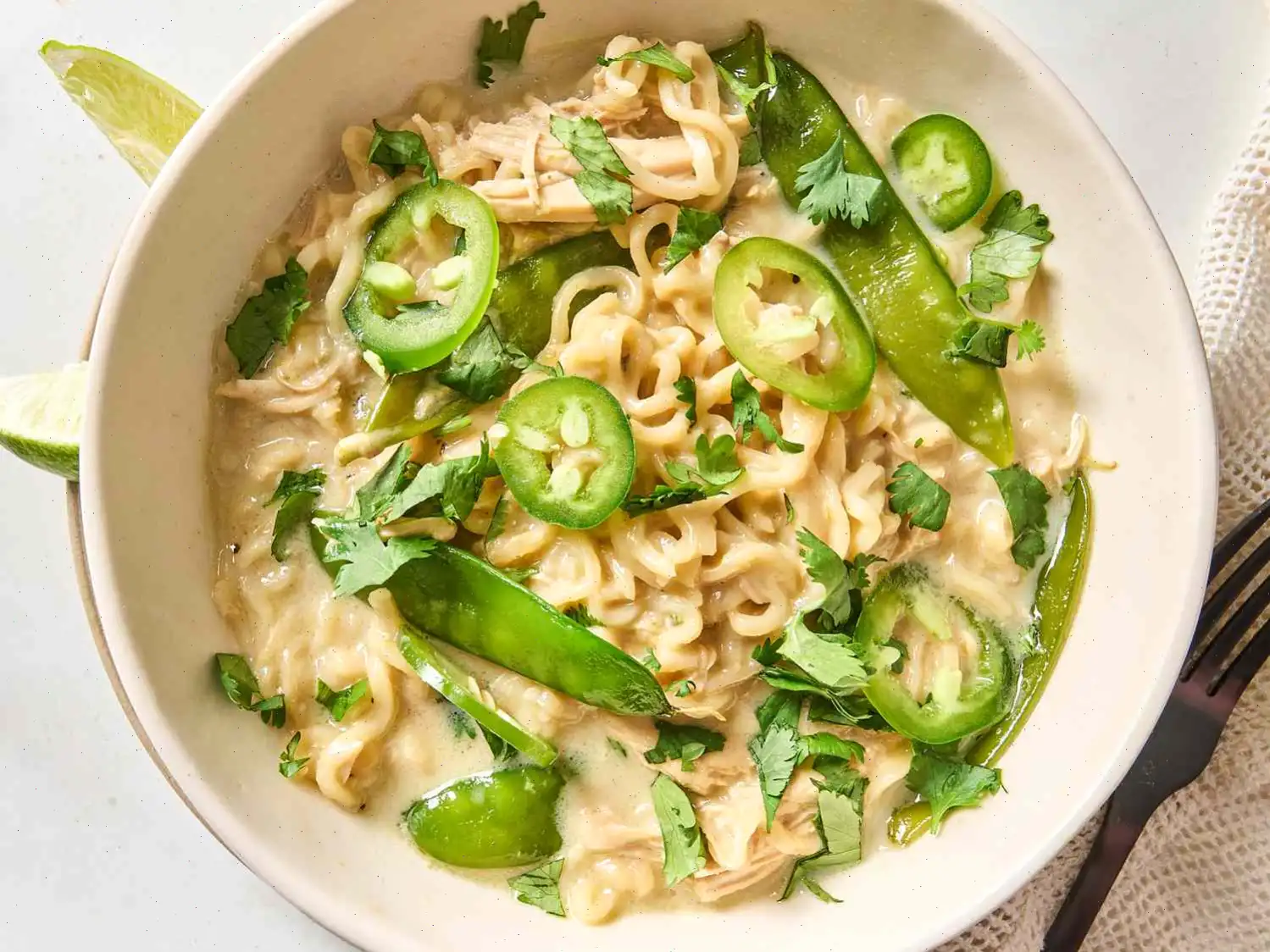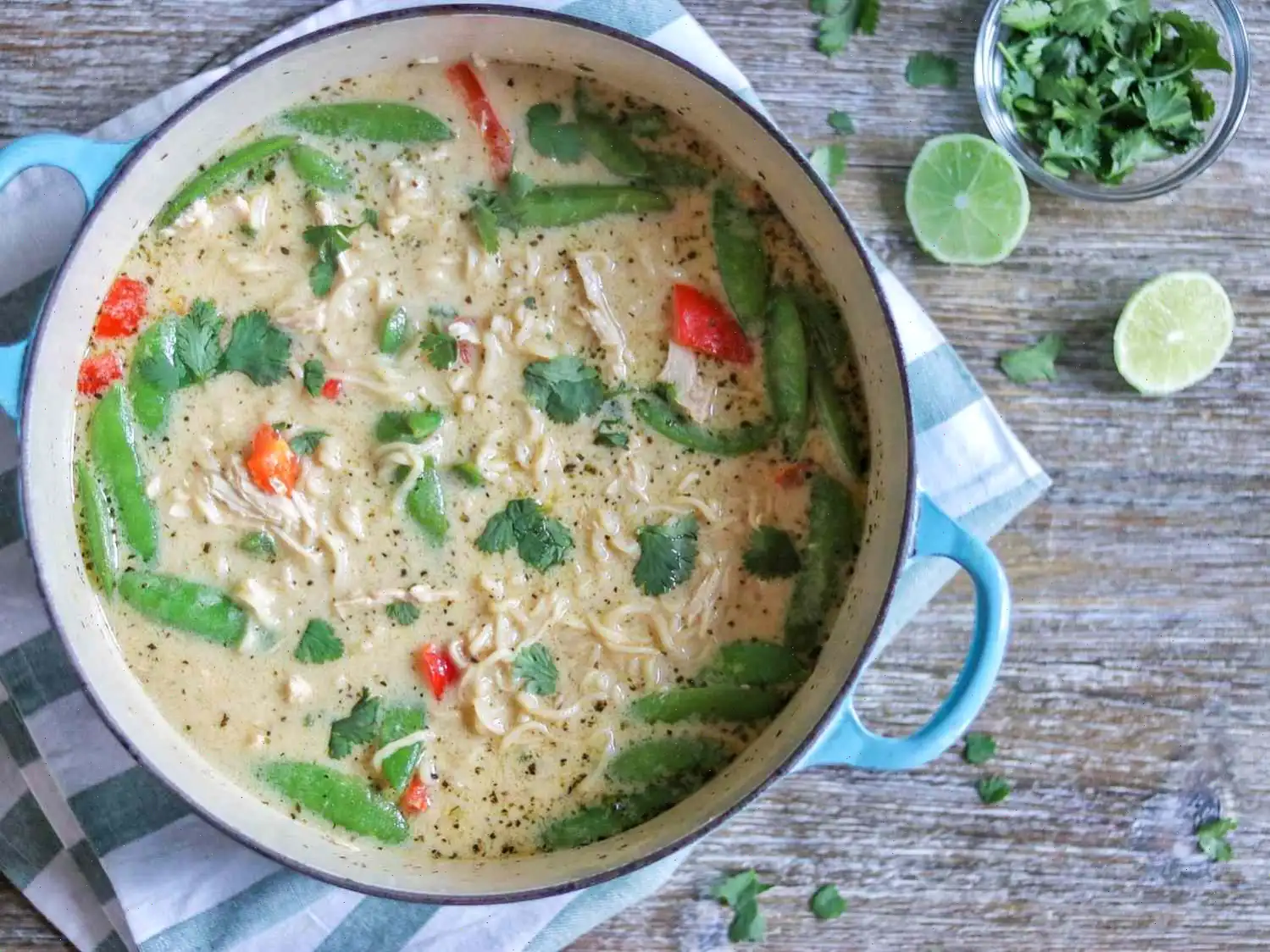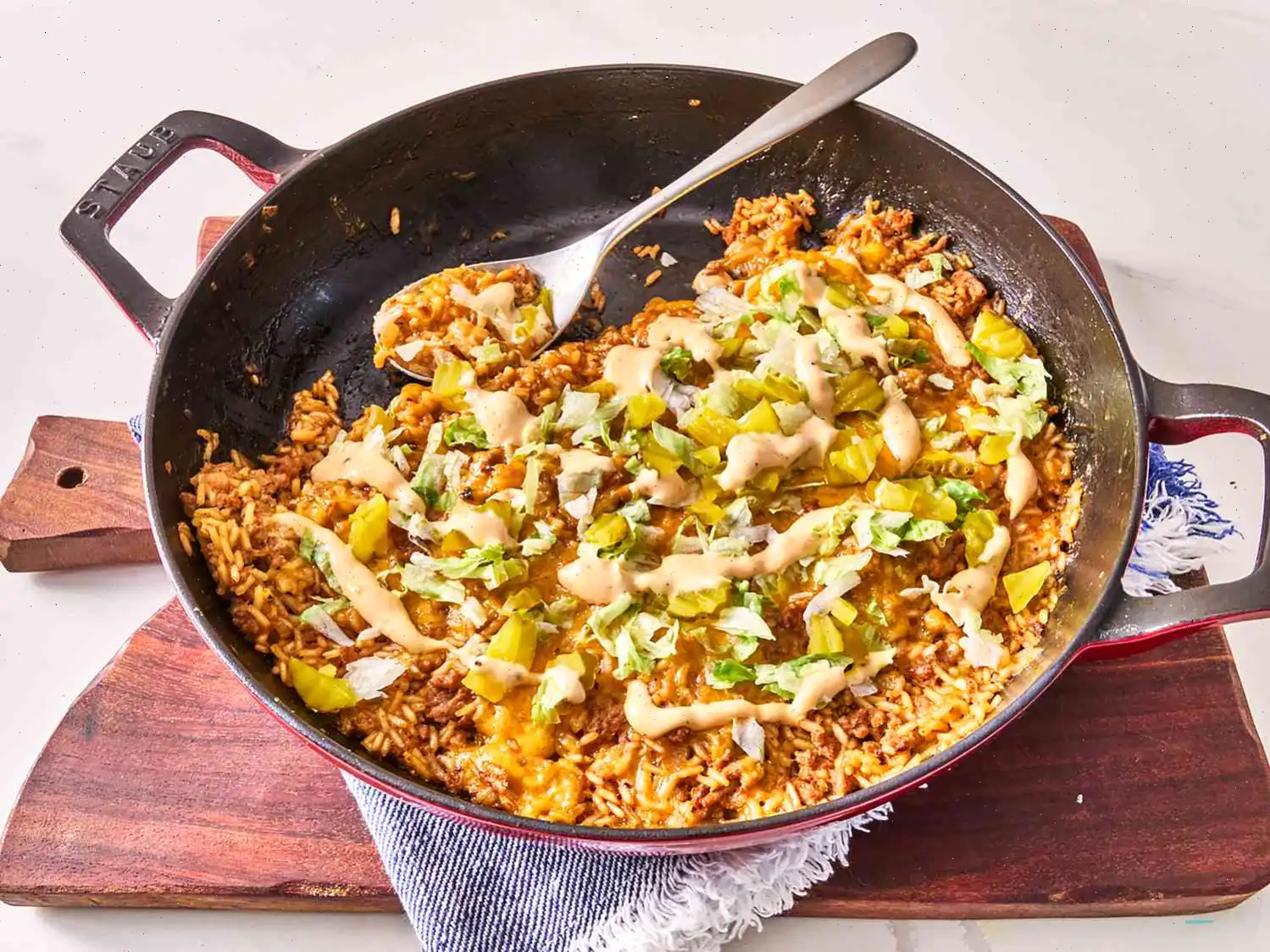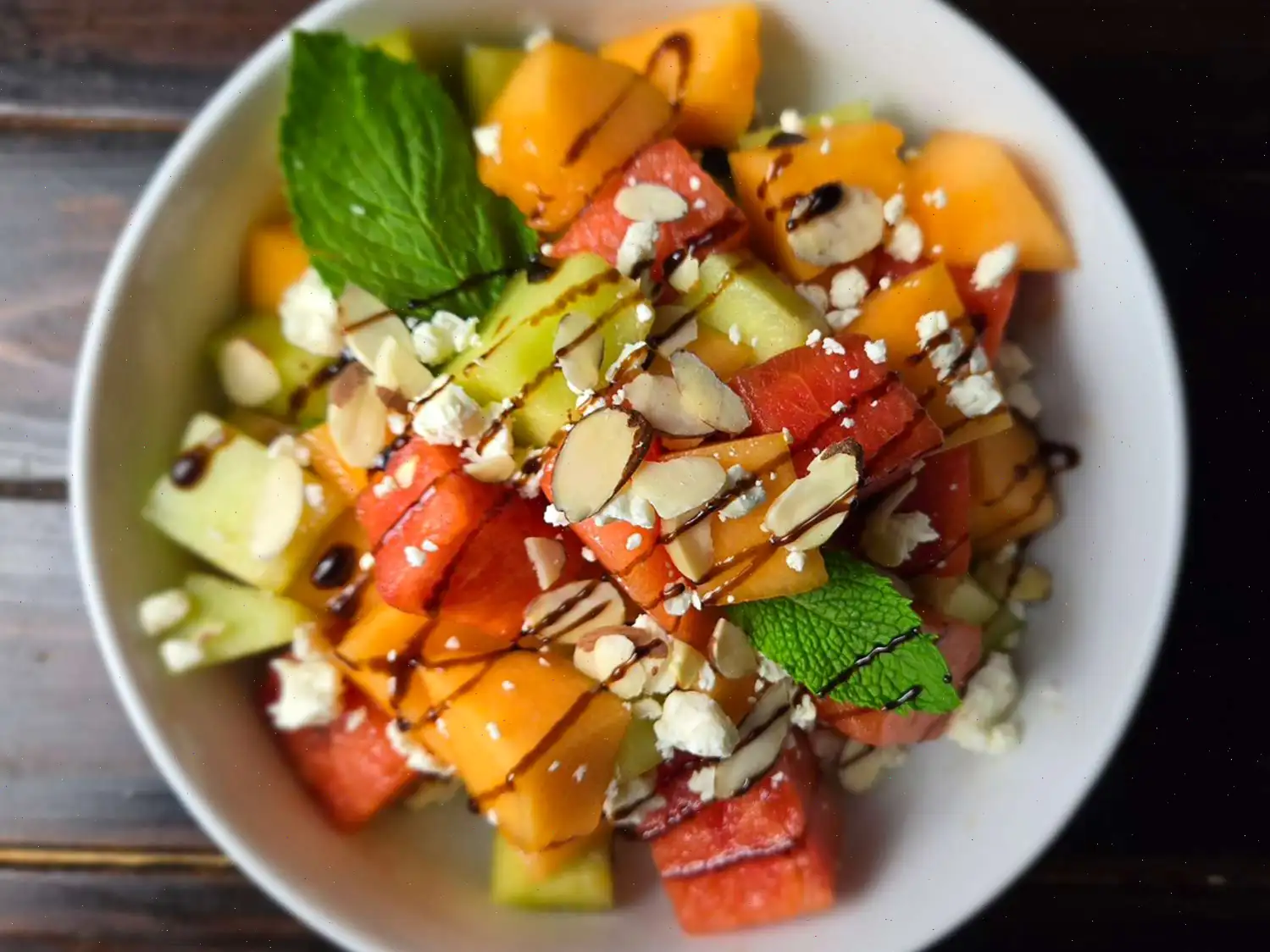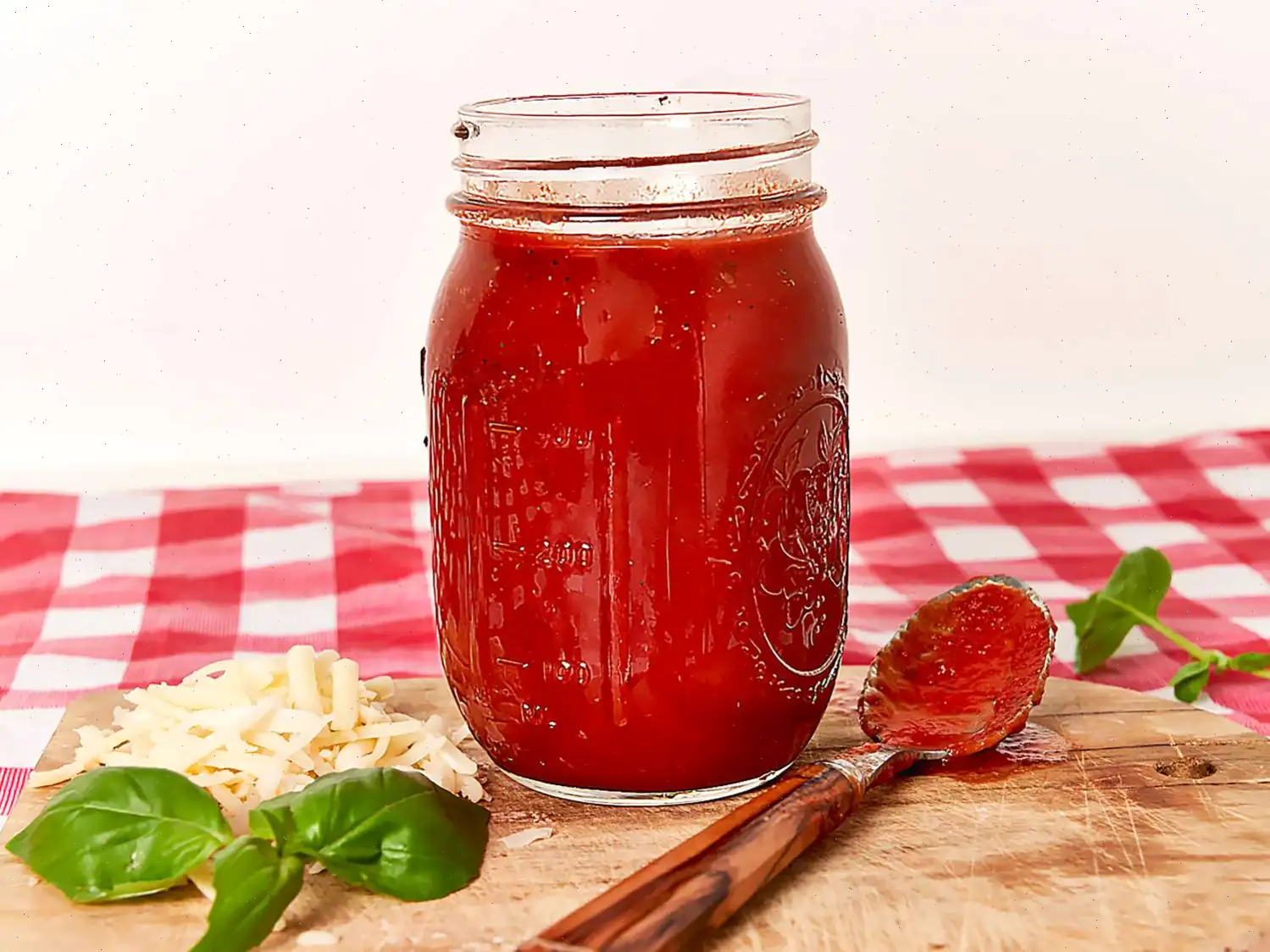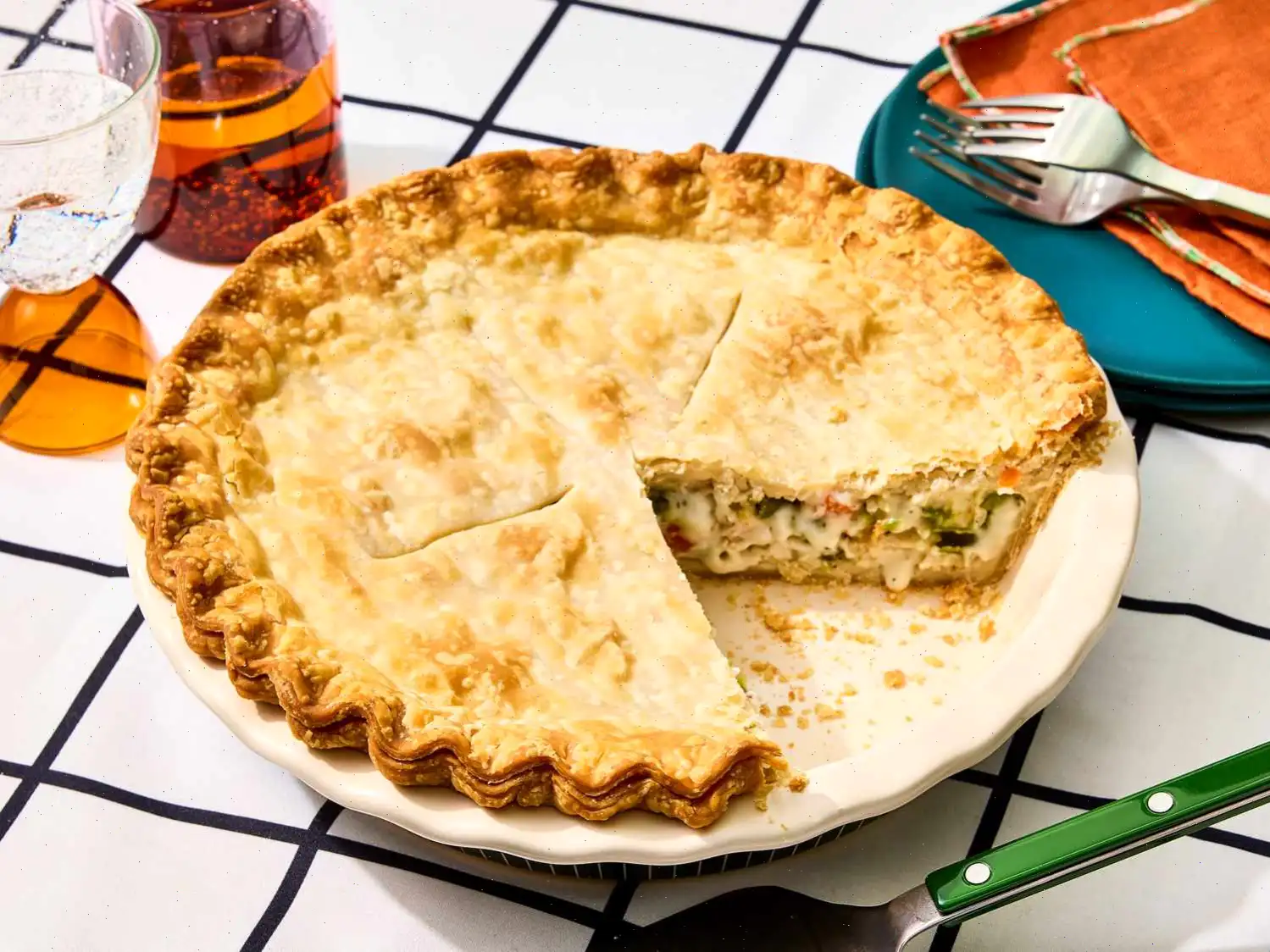
Creamy Green Curry Chicken Ramen Recipe
Ingredients
- 1 tablespoon vegetable oil
- 1 jalapeo pepper, seeded and minced
- 2 cloves garlic, minced
- 1 teaspoon grated fresh ginger
- 1 lime, zested
- 2 cups shredded deli rotisserie chicken
- 2 (13.5 ounce) cans coconut milk
- 3 cups chicken stock
- 1/4 cup green curry paste
- 2 tablespoons soy sauce
- 1 tablespoon fish sauce
- 1 tablespoon brown sugar
- 1/2 teaspoon dried basil
- 2 (3 ounce) packages ramen noodles (without flavor packet)
- 1 (8 ounce) package snow peas
- 1 red bell pepper, chopped
- 1/4 cup chopped fresh cilantro
Directions
Step 1: Heat oil in a large pot over medium heat. Add the minced jalapeo, garlic, ginger, and lime zest to the pot. Cook and stir for about 1 minute until fragrant.
Step 2: Add the shredded rotisserie chicken to the pot, and stir for another 30 seconds until the chicken is well combined with the aromatic ingredients.
Step 3: Pour in the coconut milk, chicken stock, green curry paste, soy sauce, fish sauce, brown sugar, and dried basil. Stir everything well to ensure an even distribution of flavors.
Step 4: Bring the mixture to a simmer, stirring occasionally. Allow it to heat through while the flavors meld together.
Step 5: Add the ramen noodles, snow peas, and chopped red bell pepper. Cook for about 3 to 5 minutes, or until the noodles are al dente and the vegetables are crisp-tender.
Step 6: Once everything is cooked, serve hot, garnished with freshly chopped cilantro for a fresh burst of flavor.
Nutrition Facts (Per Serving)
- Calories: 916
- Total Fat: 66g (85% Daily Value)
- Saturated Fat: 43g (213% Daily Value)
- Cholesterol: 53mg (18% Daily Value)
- Sodium: 1801mg (78% Daily Value)
- Total Carbohydrate: 68g (25% Daily Value)
- Dietary Fiber: 13g (45% Daily Value)
- Protein: 44g (87% Daily Value)
- Potassium: 1380mg (29% Daily Value)
Note: Percent Daily Values are based on a 2,000 calorie diet. Your daily values may be higher or lower depending on your calorie needs. Nutrient information is not available for all ingredients, and if you're following a medically restrictive diet, please consult a healthcare professional before preparing this recipe.
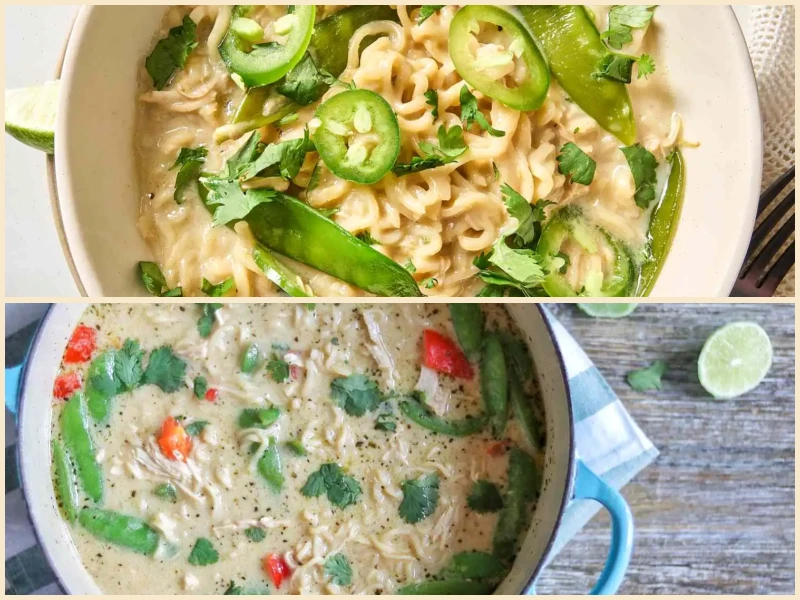

Origin and History
Ramen is a quintessential Japanese dish, beloved for its comforting and versatile qualities. However, the combination of creamy green curry with ramen noodles is a modern fusion of Thai and Japanese cuisines. Green curry, a staple in Thai cooking, is known for its aromatic herbs, coconut milk, and balance of spicy, savory, and slightly sweet flavors. By integrating green curry paste into a ramen broth, this recipe creates a delightful cross-cultural culinary experience. It highlights the growing trend of mixing flavors from different parts of Asia, where coconut milk, curry pastes, and noodles are being combined in innovative ways. The dish, although rooted in Thai flavors, can be considered part of the broader wave of global fusion cooking.
Regional Variations
The creamy green curry chicken ramen recipe represents a unique regional fusion, combining traditional Thai green curry with the iconic Japanese ramen. In Thailand, green curry is often served with rice, noodles, or in soups, but never typically paired with ramen. On the other hand, Japans ramen dishes usually feature broths like shoyu, miso, or tonkotsu, with a variety of toppings such as pork, eggs, and seaweed. This recipe blends the richness of Thai green curry with the comforting texture of ramen noodles, showcasing how global influences are transforming classic dishes. In some parts of Thailand, you may find variations using more vegetables or seafood instead of chicken, while in Japan, ramen variations with coconut milk and curry are becoming increasingly popular, especially in trendy fusion restaurants.
Difference from Similar Dishes
While traditional ramen uses a soy-based or pork-based broth, this dish introduces a creamy texture from coconut milk and a distinctive flavor from Thai green curry paste. The use of green curry paste provides a much spicier and more aromatic profile compared to typical ramen broths. Additionally, the addition of lime zest, ginger, and fish sauce adds an extra layer of freshness and complexity not usually found in traditional ramen. Compared to similar dishes like "Curry Ramen" or "Spicy Ramen," the creamy version here offers a rich, velvety mouthfeel thanks to the coconut milk, making it stand out from the clear broths of traditional ramen.
Where It's Typically Served
Creamy green curry chicken ramen is often found in trendy fusion restaurants or modern Asian eateries that experiment with blending various culinary traditions. While it is not a traditional dish in either Thai or Japanese cuisines, it can be found in international cities where Asian fusion cuisine is popular. From the streets of Tokyo, where ramen shops constantly innovate, to Bangkok, where green curry reigns supreme, this dish is becoming a favorite among food lovers who crave a new take on familiar flavors. It's also a popular dish at home for those seeking a comforting yet exotic meal that's easy to prepare and full of bold flavors.
Fun Facts
Did you know that the popularity of ramen worldwide has skyrocketed in recent decades? Originally a humble dish in Japan, ramen shops can now be found in nearly every corner of the globe. The trend of "fusion" foods has only added to its charm, allowing creative cooks to combine ingredients from different cultures into one dish. The addition of coconut milk in ramen, for example, draws inspiration from Southeast Asian cooking, and it's a great example of how ingredients traditionally used in Thai cuisine can create exciting new interpretations of Japanese comfort food. Interestingly, coconut milk is also known for its health benefits, such as boosting heart health and providing essential vitamins, making this creamy ramen dish not only delicious but potentially beneficial too.
FAQ about Creamy Green Curry Chicken Ramen Recipe
Comments
Paul Roberts
10/12/2022 11:46:52 AM
Quick and easy with great flavor.


